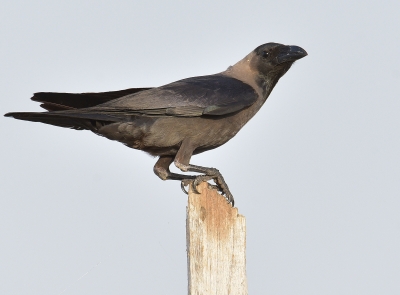
The Cape Hare (Lepus capensis) is a wild animal living in most gravel, sandy, and mountainous desert environments of the Kingdom of Saudi Arabia. Cape hares can adapt to the desert lifestyle to the extent that even the color of their fur matches the color of the environment in which they live to protect themselves from enemies. They are widely found in desert plains and sandy areas of al-Rub' al-Khali (Empty Quarter), al-Dahna Desert, and al-Nufud al-Kabir Desert, as well as in the plateaus and mountainous areas.
Characteristics of cape hares
Cape hares have a long and slender body, large eyes, and a short tail. Their fur color ranges from grey to reddish-brown. They have a white belly and a white and black tail.
They are also characterized by their sharp eyesight and a strong sense of smell. These features help them locate sources of danger and escape from enemies, depending on their enemy speed, with their speed reaching up to seventy km/h. Cape hares are often spotted at night, before sunset, or in the early morning at times, when they seek food among grass and weeds. During the day, cape hares take refuge in rock cavities or under shrubs to avoid exposure to heat.
Breeding of cape hares
Cape hares breed once during spring. Their pregnancy lasts forty days at the end of which the female hare delivers three to six leverets. Younglings are breastfed for a month, after which they begin depending on themselves in terms of eating. Cape hares reach their puberty and breeding age at eight months old. They can live up to nine years.
Protection of cape hares
Cape hares are found in protected areas in the Kingdom, including Uruq Bani Ma'arid Reserve, the Ibex Reserve Protected Area, Imam Saud Bin Abdulaziz Royal Reserve, Mahazat as-Sayd Protected Area, Raydah Natural Reserve, and the upper Shada Mountain Reserve. The National Center for Wildlife deploys its efforts within the framework of breeding hares in separate groups at its research and breeding centers before reintroducing them into their natural habitats. Cape hares were listed under the lists of the Implementing Regulations for Hunting Wildlife, where the prescribed penalty for their hunting amounts to SAR18,000.
Related quizzes
Related articles


